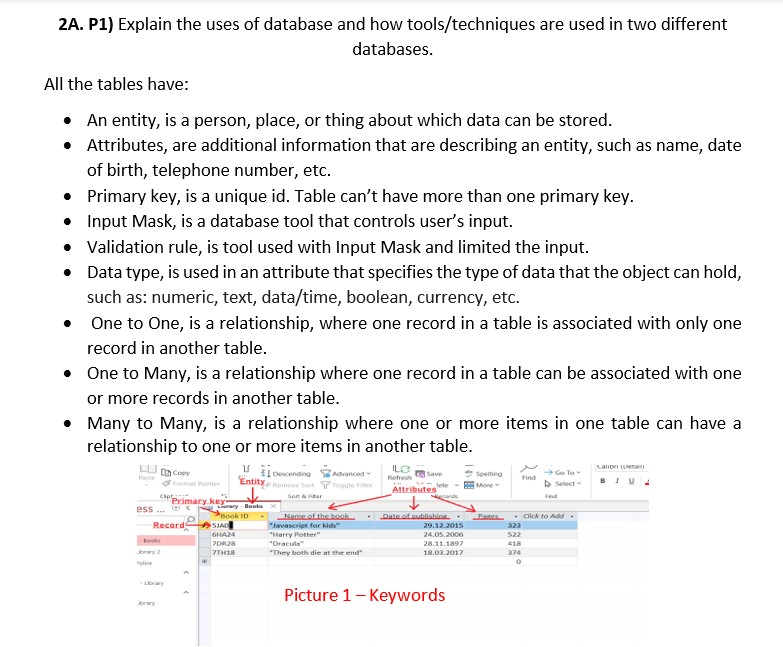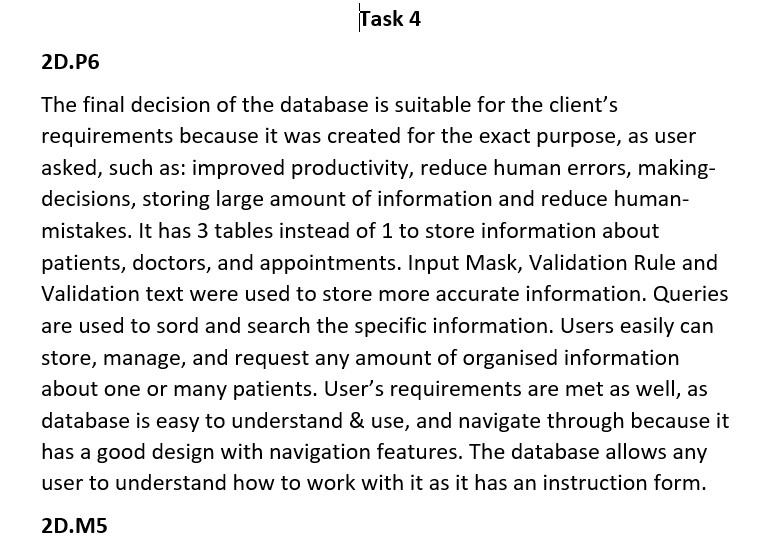Description of Unit 10: Database Development
In this unit you will investigate the features and uses of databases by exploring what they are and what you can do with them. You will be able to apply some of your findings to your own database solution. You will also learn how to use database software to design, develop and test relational databases for a brief. Once completed, you will review your database, having obtained feedback from others, and evaluate possible improvements.
A - understand the uses of and tools/techniques used in databases
B - design a relational database
C - develop and test a relational database
D - review the finished relational database
LOA
Why are databases used? - The purpose of database software is to store, manage and extract a large amount of organised information for one or more users. Know why organisations use databases to: improve productivity, make decisions, present information.

LOB
Designing a database - Designs should be based around the intended purpose and user requirements as defined in a brief to solve a problem. Design documentation, including: hardware, software and other resources required, including entities, attributes and relationships, validation procedures, input and output screens/forms and reports, constraints, test plan with test data to test functionality , a brief outline of alternative design ideas.

LOC
Software tools and techniques to develop a relational database Create and edit: single and multiple table structures with appropriate field characteristics, including: field names, field data types, e.g. alphabetic (text and memo), numeric (number, currency, and date/time), alphanumeric (text and memo), logical (yes/no and true/false), web (hyperlink), lookup wizards, field sizes (e.g. byte, integer, long integer, single, double and decimal), field formats (e.g. fixed and decimal places), default values, etc;

LOD
Reviewing a database Review the finished relational database for: the user requirements and user experience (e.g. usability and reliability), fitness for purpose, any constraints (e.g. hardware and software availability), strengths and improvements.
